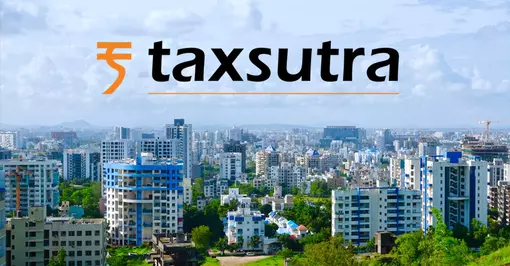12 Key Takeaways from India’s Dept. of Revenue (CBDT) Guidelines on Virtual Digital Assets
India’s Department of Revenue – Central Board of Direct Taxes (CBDT) has issued Guidelines under section 194S i.e. for withholding tax on transfer of Virtual Digital Assets (VDAs), introduced by the Indian Finance Act, 2022 that comes into force on 1 July 2022.

The Finance Act 2022 had introduced a new scheme to provide for taxation of VDAs, which states that any income from transfer of any virtual digital asset shall be taxed at the rate of 30%. It had also introduced a withholding tax of 1% on the payment for transfer of VDAs to a resident.
The Guidelines now issued provide clarity on the burden of tax withheld in multilayered transactions involving exchanges and payment gateways apart from buyers and sellers by providing a mechanism of information exchange between the various parties involved in the transactions. It also provides clarity on the withholding tax liability where transactions take place partly in cash and partly in kind or entirely in kind.
The Guidelines also lay down the compliance required by the VDA Exchange and persons specified under section 194S.
Lastly, the Guidelines clarify the computation of the threshold for the purpose of applicability of section 194S in the current financial year.
Transfer of VDAs through an Exchange or Broker
1. Where the transfer of VDAs takes place through an Exchange or broker, in order to avoid withholding tax under section 194S at multiple stages, tax may be withheld only by the Exchange that is crediting/making payment to the seller.
2. Where the credit/payment between Exchange and the seller is through a broker (who is not the seller), the burden to deduct tax is on both the Exchange and the broker. However, the burden shall be on the broker if there is a written agreement between Exchange and broker that the broker shall withhold tax under section 194S.
3. Where the VDAs are owned by the Exchange, although the primary responsibility is for the buyer or their broker, the Exchange may enter into a written agreement with the buyer or their broker that in regard to all such transactions the Exchange would be paying the tax.
4. The Exchange would be required to furnish a quarterly statement (Form No. 26QF) for all such transactions of the quarter on or before the due date and also furnish its income tax return including all such transactions in the return.
Transfer of VDAs for Consideration in Kind, through an Exchange or Broker
5. Where VDAs are transferred for consideration in kind, or partly in cash and partly in kind, through an Exchange, tax may be withheld by the Exchange. The Guidelines specify that this alternative approach can be exercised based on written agreement entered into by the Exchange with the buyers/sellers.
6. The Exchange would be required to withhold tax on both legs of the transaction (Buyers/Sellers) and report it as tax withheld on both legs of the transaction.
7. Where the tax amount withheld is also in kind, the same should be converted into cash before it can be deposited with the government. The Guidelines specify the following mechanism:
a. At the time of transaction, the Exchange will withhold tax in the pair being traded. The trail of transactions proving deduction of 1% of consideration for every VDA to VDA trade shall be maintained by the Exchange.
b. The Exchange shall immediately execute a market order for converting this tax withheld in kind (1% Monero/ 1% Deso in the above example) to one of the primary VDAs (BT, ETH, USDT, USDC), which can be easily converted into INR.
c. All the tax withheld for the day (converted into primary VDA) shall be accumulated for the day.
d. The accumulated balance of primary VDAs at 00:00 hours shall be converted into INR based on the market rate existing at that time and the aforesaid sell orders shall be executed on the open buy orders in the market.
e. The customer will be issued a contract note by e-mail, which will include the amount of tax withheld in kind under section 194S and the amount of INR realized from such tax withheld.
f. The tax withheld in kind under section 194S and converted into INR by following the above procedure shall be deposited in the government account as per the timeline and process given in the Income-tax Rules 1962.
Section 194Q vis-a-vis section 194S
8. Where tax was once deducted under section 194S, it would not be required to be withheld under section 194Q (which deals with withholding on the purchase of goods).
Consideration for withholding tax
9. Withholding tax shall be on the “net” consideration after “excluding GST/charges levied by deductor” rendering services.
Withholding Tax where Payment Gateways are involved
10. In cases where the payment is made through payment gateways, the payment gateway shall not be required to withhold tax under section 194S, if tax has been deducted by the person (buyer) required to make such a deduction. However, to facilitate proper implementation, the digital platform (payment gateway) may take an undertaking from the buyer regarding withholding tax.
Calculation of threshold of INR 50,000/10,000 for applicability of section 194S
11. The Guidelines clarify that the calculation of consideration for transfer of VDA triggering withholding under section 194S shall be counted from 1 April 2022.
12. Where the consideration for transfer of VDA has been paid or credited before 1 July 2022, such sum would not be subject to withholding tax under section 194S.